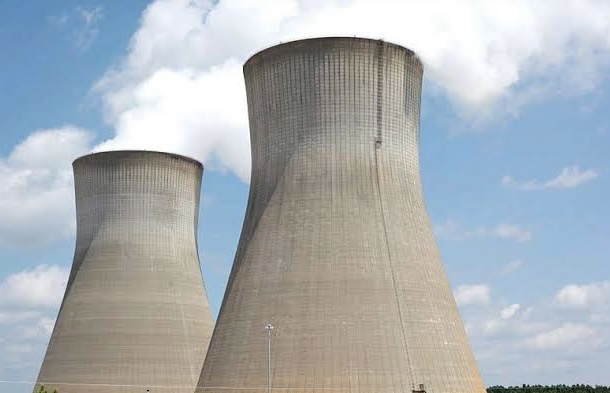Key Points
- The U.S. leads globally with 97 GW from 93 reactors.
- France generates 70% of its electricity through nuclear power.
- South Korea’s 27 reactors power nearly 30% of the country.
As global energy demands rise and concerns over climate change intensify, many countries are turning to nuclear power to meet their electricity needs while reducing their reliance on fossil fuels. While some nations have long relied on nuclear energy, others, like Nigeria, are just beginning to shift away from fossil fuels like oil and natural gas, aiming to diversify their energy sources. Here’s a look at the top 10 largest nuclear power countries, ranked by their installed nuclear generation capacity.
1. United States: 97 GW of nuclear generation
The United States leads the world in nuclear energy production, accounting for more than 30% of global nuclear power generation. With a total of 97 gigawatts (GW) of nuclear capacity, the U.S. operates 93 commercial nuclear reactors across 30 states. These reactors provide about 20% of the country’s total electricity.
2. France: 61.3 GW of nuclear generation
France has the highest percentage of electricity generated from nuclear power, with nearly 70% of its electricity coming from nuclear energy. The country operates 56 nuclear reactors, providing a total capacity of 61.3 GW, making France the second-largest nuclear power producer globally.
3. China: 57 GW of nuclear generation
According to a report by Vanguard, China ranks third in nuclear power generation, with 55 operational reactors and a combined capacity of 57 GW. Nuclear power accounts for about 5% of the country’s total electricity production. China continues to expand its nuclear capabilities as part of its broader energy strategy.
4. Japan: 31.7 GW of nuclear generation
Japan operates 33 nuclear reactors, generating 31.7 GW of power. Two additional reactors, Ohma 1 and Shimane 3, are under construction, which will add an additional 2.6 GW to the country’s nuclear capacity once completed. Nuclear energy plays a significant role in Japan’s energy mix.
5. Russia: 29.6 GW of nuclear generation
In Russia, nuclear power contributes about 20% of the nation’s electricity supply. With 37 nuclear reactors, Russia has a total nuclear power capacity of 29.6 GW. The country continues to focus on nuclear energy as a key component of its energy strategy.
6. South Korea: 31.65 GW of nuclear generation
South Korea relies heavily on nuclear energy, which accounts for nearly 30% of the country’s electricity. The nation operates 27 reactors, providing a total nuclear capacity of 31.65 GW. South Korea is also looking to expand its nuclear energy infrastructure to meet future energy needs.
7. Canada: 13.5 GW of nuclear generation
Canada has a total nuclear power capacity of 13.5 GW, primarily from CANDU reactors, which are known for their safety and efficiency. These reactors use natural uranium as fuel and are mostly located in Ontario. Nuclear energy accounts for around 15% of Canada’s total electricity generation.
8. Ukraine: 13.1 GW of nuclear generation
Ukraine operates 15 nuclear reactors across four nuclear power plants, generating a total of 13.1 GW of electricity. These reactors are located in regions such as Chernihiv, Kharkiv, and Mykolaiv. Ukraine also has two reactors, Khmelnitski 3 and 4, under construction, which will add to the country’s nuclear capacity.
9. United Kingdom: 8.9 GW of nuclear generation
The United Kingdom has a total nuclear power capacity of 8.9 GW, produced by 15 reactors spread across several sites. Nuclear energy accounts for about 15% of the UK’s total electricity generation. The country is exploring new nuclear projects to help meet future energy needs.
10. Spain: 7.1 GW of nuclear generation
Spain’s nuclear power capacity is smaller compared to some of the other leading countries, with a total of 7.1 GW generated by seven reactors. Nuclear power accounts for about 20% of Spain’s total electricity production. Despite its smaller share, Spain continues to rely on nuclear energy as a key part of its energy mix.
Conclusion
These top 10 countries are at the forefront of nuclear power production, harnessing the technology to meet their growing energy demands while reducing carbon emissions. As the world shifts toward cleaner energy sources, nuclear power is set to play an even more crucial role in the global energy landscape.



